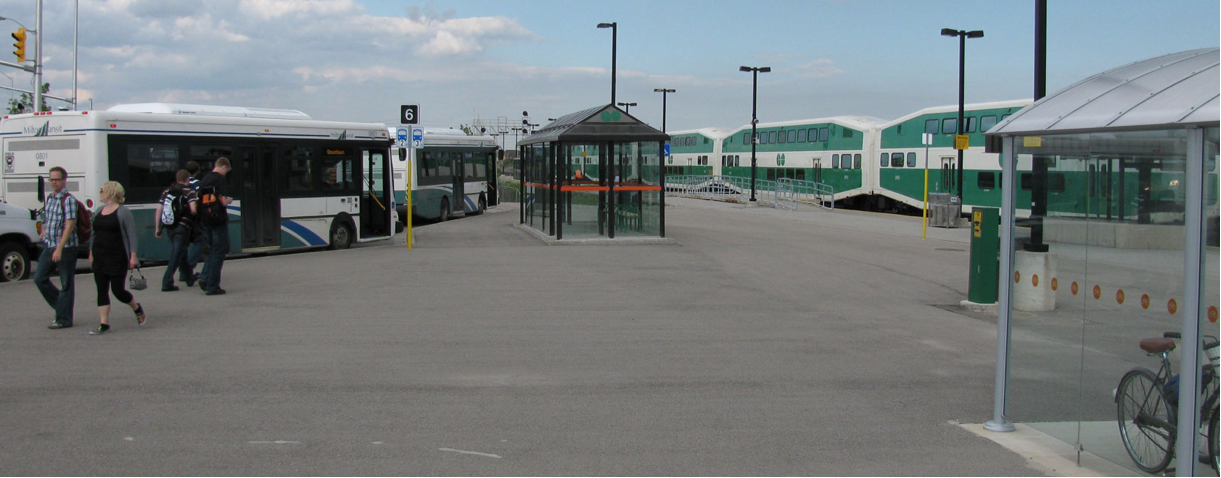INDEPENDENT ANALYSIS
Milton Transit: Hobbled – But Not Hopeless

The three cardinal rules for success in public transportation are (1) frequency, (2) frequency and (3) frequency. By those standards, Milton Transit fails the test – but not of its own doing.
Like most urban transit systems in Ontario and across Canada, Milton Transit’s failure to reach its full potential is due to a lack of a consistent and equitable funding partnership with the federal and provincial governments. It is beyond the financial capacity of local governments – which don’t have adequate access to the required public revenues – to meet the full needs of transit users. Even in the U.S., federal and state programs more equitably share tax revenue with local transit systems to acquire vehicles and maintain a state of good repair.
Like VIA Rail Canada’s transcontinental passenger trains, Milton Transit and other systems are being overloaded by the multiple market segments they must try to serve with inadequate frequencies and the resources with which they have to work. Trying to play many roles, these public transport services are unable to serve many of them – let alone all of them – adequately.
Today, Milton Transit is expected to provide a multi-route service that meets the needs of:
-
local commuters travelling to and from their jobs via GO Transit’s trains and buses;
-
workers employed by local businesses;
-
students of all ages, who are without drivers’ licenses or access to personal vehicles;
-
those with mobility challenges that make it difficult or impossible to drive; and
-
residents and visitors travelling to and from a wide range of medical, shopping and leisure activities here and elsewhere in the Greater Toronto and Hamilton Area (GTHA).
With its basic grid layout, Milton requires beefed up transit on the trunk routes that form this grid. More cost-effective methods need to be expanded to serve the lower-density residential and employment pockets off this grid. The Trans-Cab service is a step in the right direction, but it is still limited in coverage and hours of service. Other communities, such as Georgetown and Innisfil, have also taken steps in this direction by contracting with cab companies and Uber to provide these “first and last mile” services. More should be launched.
However, the biggest problem remains the scattershot transit planning and funding policies of the previous provincial government. Promises of far-off, gold-plated solutions were trotted out to provide political photo ops, but with little or no follow-up. When slight improvements were made to GO services and local transit funding arrangements, they were invariably inadequate to address the real problem, which is that transit frequency and coverage still lag behind many other jurisdictions in North America. This places Milton and other communities at a severe disadvantage in terms of attracting and retaining residents, businesses, investment and jobs.
Failing to improve Milton Transit and other systems leads to a competitive disadvantage. Joint federal/state/municipal transit funding and governance initiatives in places such as North Carolina, California and the Pacific Northwest are delivering easy and affordable car-free mobility that makes these attractive locales, especially to Millenials, who don’t want to car-dependent and have the competitive skills to choose where they want to live and work.
But Milton’s transit glass isn’t half-empty. It’s only half-full.
The current transit master plan is a good place to start on making Milton Transit a better and more innovative service at a justifiable cost. Doing more will produce pay back not just better performance, but a substantial boost in local economic activity and tax revenue.
What’s needed is a fast and thorough review of Milton’s transit plan, with citizen input, by experts who can refine it without being hobbled by the uninspired policies of the previous government. It should recognize the new provincial government’s view that the feds must participate in assured and consistent strategies to build communities that are socially, economically and environmentally attractive and globally competitive.
Improvements to Milton Transit can only occur through a concerted effort by all of Ontario’s transit agencies, industry and municipal associations, and the senior levels of government. Milton residents, councillors and staff can take the lead by rethinking their own master plan so it not only address Milton’s needs, but can serve as a model for other communities.
As said decades ago by Charles F. “Boss” Kettering, one of the visionaries behind the success of General Motors, “A problem well stated is a problem half-solved.”
Greg Gormick is a nationally-known transportation consultant and policy advisor. His clients have included Metrolinx, the TTC, Canada’s major railways, international rail and transit equipment builders, and elected members of four political parties.